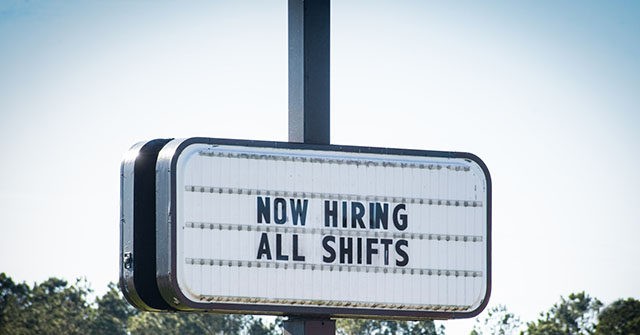Top News
Private Sector Job Gains Explode Higher, Biggest Gain Since July

Businesses in the U.S. added 184,000 workers to their payrolls in March, the largest increase in hiring since July, according to payroll processor ADP.
The March hiring exceeded even the most optimistic forecasts. The median forecast was for 155,000 jobs, with a range from 125,000 to 175,000.
The prior month’s hiring figure was revised up from 140,000 to 155,000.
The gain in new jobs in March was led by leisure and hospitality, which added 63,000 workers. The construction sector added 33,000 and trade, transportation, and utilities added 29,000.
Nine out of the 10 business groups tracked by ADP added jobs, indicating strong demand for labor across the economy. Only professional and business services saw a contraction in payrolls.
All four regions of the country saw strong job growth, led by the South’s gain of 91,000 jobs and the West’s gain of 53,000. twenty-eight thousand workers were added to payrolls in the Midwest and 20,000 in the Northeast.
Service-sector providers added 142,000 jobs and goods producers added 42,000 jobs.
Medium sized businesses—those with between 50 and 499 workers—added 93,000 jobs. Large businesses added 87,000. Small firms added 16,000 jobs.
Alongside a big jump in payrolls, wages were up strongly. Annual pay was up 5.1 percent year-over-year, ADP said. Workers who have switched jobs saw a 10 percent year-over-year rise in pay, the second straight increase. This indicates that employers are bidding up wages to lure employees out of current positions. Wage gains for job-stayers were at 5.1 percent for the second straight month, making an end to several months of decelerating wage gains.
The biggest year-over-year wage gains for workers who have stayed in their jobs were in construction, leisure and hospitality, and education and healthcare.
“March was surprising not just for the pay gains, but the sectors that recorded them. The three biggest increases for job-changers were in construction, financial services, and manufacturing,” said Nela Richardson, chief economist, ADP. “Inflation has been cooling, but our data shows pay is heating up in both goods and services.”
The stronger-than-expected job gains add weight to the argument that the Federal Reserve can afford to hold off on cutting interest rates. On Wednesday morning, futures markets were implying almost no chance of a rate cut at the Fed’s May meeting, a 58 percent chance of a cut in June, and a 72 percent chance of a cut in July. The odds of a cut by September stood at 90 percent.
Read the full article here


















